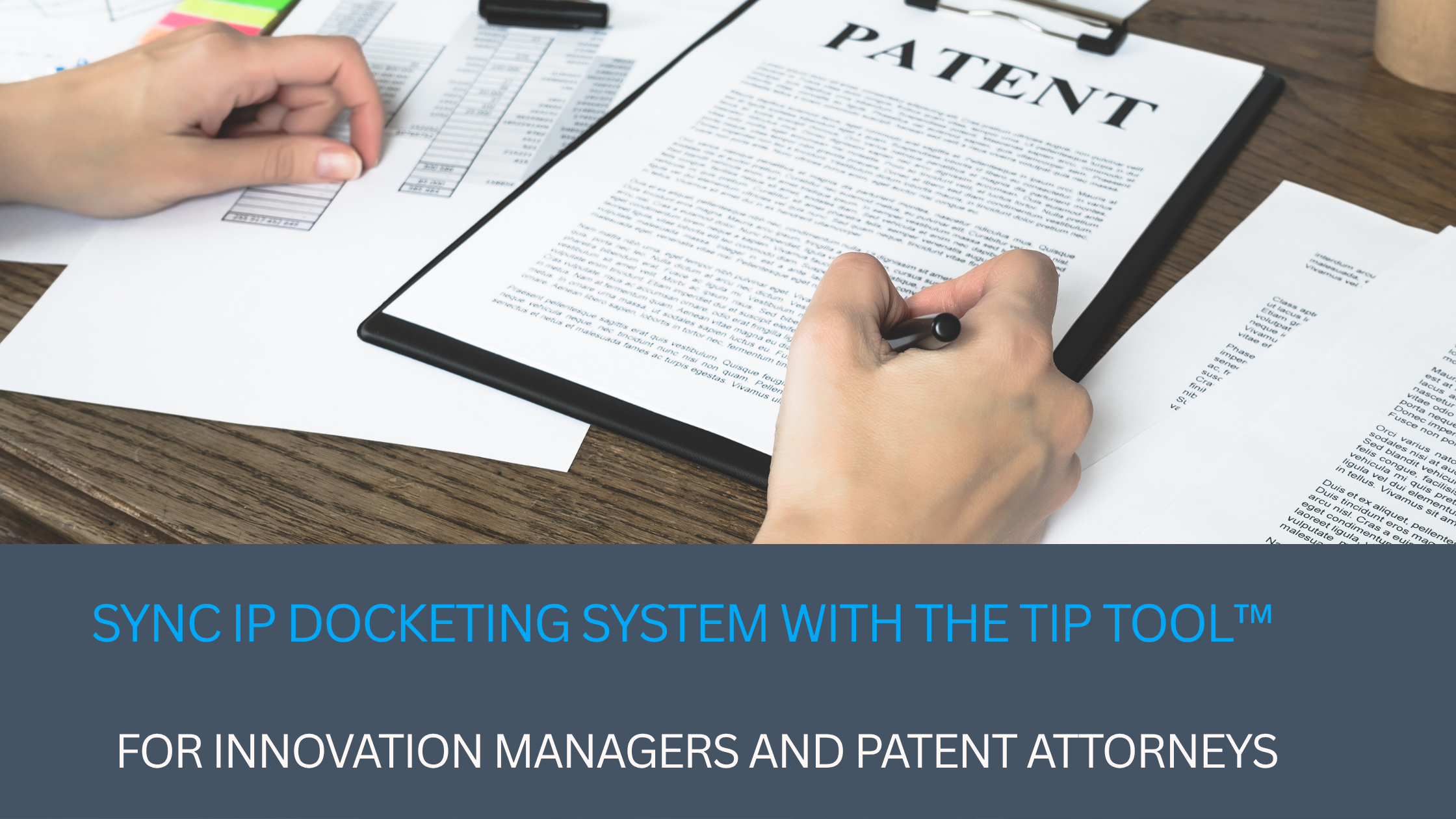The other day I was speaking to a portfolio manager at a large enterprise. He was given a task to enhance the patent portfolio for the company. My first question to him was about the process of capturing ideas from inventors.
Me: “How do you capture the ideas and collaborate over the ideas to transform them into valuable IP?”
He: “We conduct certain brainstorming sessions, capture ideas in excel sheets and pursue as and when we feel a need for the same.”
In my experience of working for over 20 years with so many enterprises, the scenario is pretty much the same. Most enterprises use excel sheets, emails, docketing softwares (that’s like giving a factory when all that’s needed is a simple machine), or some other make-do softwares to capture ideas. In this landscape, exploring alternative idea management platforms like Ideascale can revolutionize how ideas are captured and developed into valuable IP.
You Might Wonder What’s Wrong With Using Such Tools?
Well, in the absence of easy capturing and thorough vetting, a lot of things may happen which hurt the value of a patent portfolio.
- Great ideas get lost while traveling amongst various stakeholders.
- Weak ideas get pursued for filing a patent resulting in either a rejected patent or a low-value patent.
- Filed/Granted patents are sometimes great in terms of innovation but do not have a market demand as the business team did not collaborate while persuasion.
- Effort gets wasted on an idea which the company has already filed a patent on in the past by some other inventor.
- Sometimes inventors get so busy with the progress of the invention that the idea gets completely missed out of the patenting process. Even worse, the product reaches the market without IP protection. And, competitors take full advantage of it.
Hence what’s needed is a defined process to capture ideas. A way to collaborate over ideas to conduct thorough internal vetting. A place where all the stakeholders from different arenas of a business and research can contribute. Thus making sure that only the finest ideas are pursued for filing patents.
Strengthen Your Patent Portfolio Proactively
Besides this, a strong culture of innovation at the workplace and a time-to-time audit of the portfolio shall also be beneficial towards a valuable patent portfolio. Implementing a well-thought-out IP strategy can be a game-changer in nurturing a culture of innovation and strengthening the patent portfolio.
Here are 6 quick pointers that can help you strengthen your patent portfolio:
1./Effective Innovation Capturing
2. Thorough Vetting
3. Curating An Innovation Driven Culture
4. Getting Patent Experts Onboard
5. Pruning To Strengthen Your Patent Portfolio
6. Expediting Patenting Process
#1 Effective Innovation Capturing
It all starts with an idea. So, the inventor comes up with an idea. Maybe he shares the idea with you, maybe he does not. Maybe you review or maybe it gets slipped as you were too busy. And the inventor gets busy working on that idea totally forgetting about the protection it might need. Whether patent or trade secret or defensive publication.
Now the product that gets created based on the inventor’s idea is revolutionary. And it reaches the public domain without any IP protection. It’s under the threat of fast followers. Companies out there who have resources and capital are always on a look for products which they can easily copy and sell for a lower cost. These guys also save on money that you spend on R&D and engineering of the product. Thus, grabbing the market share that your company deserved actually.
And the worst part is you cannot do anything about it.
This necessitates to have a defined place to capture innovations and track their progress throughout the lifecycle.

Another thing that acts as a friction for inventors to disclose inventions and add them in the patent pipeline is: “long, non-intuitive invention disclosure forms with jargons that only attorneys understand”. To alleviate this, incorporating simplified invention disclosure forms can significantly reduce friction and encourage more inventors to participate.
At TriangleIP, we understand this friction and thus we have kept the idea capture form very simple in the TIP tool.
#2 Thorough Vetting
If you have a bunch of ideas coming in from different inventors; it’s very much possible that you might not have a budget to pursue them all for IP protection. So in order to choose which ideas to pursue, the ideas need to get evaluated from different aspects. You might wish to keep some ideas as trade secrets or give some to public domain with patent protection. Hence what’s needed here is a thorough vetting of ideas.
Innovation happens quite early in a process. Typically before you have any customer or market validation. Hence all that can be done is speculation on which ideas will generate revenue a few years down the line. It takes around 3-5 years to get patent protection for an invention.
However, one thing that helps you mitigate the risk and choose the best of ideas is to have it vetted by people from different streams; business, legal, engineering, strategy, etc. This highlights the importance of having a robust idea management tool that can facilitate such multifaceted vetting processes.
Listed below are some important factors to consider to zero down on the ideas for patenting:
- Strategic vision of the enterprise.
- Alignment with a product line to have market dominance.
- Say there is a company that deals in smart refrigerators. It would want to have patents around advanced functions of refrigerator like: Ordering groceries based on the supplements about to finish in the refrigerator.
- Market expansion across geographies.
- Just for defensive purposes against probable lawsuits.
- Alignment with a product line to have market dominance.
- Relevance of technology to be patented in long term. Technologies go out of date as industries evolve.
- Example: Mobile phones have almost out-dated the landline phones in the last few years.
- Budget allocated towards IP.
#3 Curating An Innovation-Driven Work Culture.
“When failure is not an option, we can forget about creativity, learning and innovation. – Brene Brown”
Embracing failure is the key to have an innovation driven culture. Because the studies suggest that a significant percentage of innovations fail. The companies must have enough risk appetite (financially) to handle the failures. (Because somewhere there are chances of blockbuster success too).
And that’s not all, there are many other factors that can encourage or kill innovation culture at an enterprise.
The other day I was reading a book called “The Invincible Company” and in that, I came across a beautiful concept called “The Culture Map”. The culture map talked about the Enablers and Blockers of innovation at a company. It resonated really well with me.
On a side note: Would you want to know how your patent application is progressing at the USPTO compared to other applications in the same domain?
The TIP tool offers statistics of the law firm and the examiner handling your case. Once the application is filed at the USPTO, and an examiner is allotted to your case, the tool indicates the relative performance of the law firm handling your case. The statistics revolve around the number of arguments, grant rate, and grant time. The tool also indicates the case health, for instance, it can tell you if a case needs your attention. There is a whole bunch of insights that you can gather from the TIP tool for strategic patent prosecution.
Request insights for any of your cases at the patent office using the form below.
Innovation Culture Blockers:
- Lack of Innovation Strategy.
- General Fear of Failure.
- Bureaucracy slowing down innovation.
- Locked into Current Business Model.
- Lack of skills, knowledge and experience.
Innovation Culture Enablers
- Strategic guidance.
- Resource allocation.
- Innovation Tools.
- Legitimacy and Power.
- Skills development.
It would be beneficial to take a quick look inside your organization for these enablers and blockers. This shall further be helpful in creating an environment where innovation shall flourish for the organizational good.
#4 Getting Patent Experts Onboard:
Lack of expertise in drafting patents may result in rejection. Mentioned below are some of the top reasons for rejection of patent applications:
- Improper and Insufficient description of the invention and how it works.
- Lack of novelty.
- Non-patentable subject matter; e.g. new use of a known substance.
- Erroneous Writing: Issues with line numbers, reference numbers on drawings, or paragraph numbers.
If you don’t have in-house experts to write the patent, we suggest that you choose an IP firm that has the reputation and the experience to handle the end-to-end process. You need to have the right people on the job to draft the patent. Ensure that the one who is writing the patent has deep knowledge of the technology, has the right background, understands the fundamentals of a patent, and so on.
#5 Pruning Patent Portfolio | Abandoning ‘Out-of-Date’ Patents
Let’s say you have a portfolio of many patents (50 or more), only a few of them would be worth a lot. The rest will guzzle your time, effort and money.
Maintenance fee alone can become a significant expense if there are many patents in a portfolio and for quite a long time. The snapshot below shows the maintenance fee to be paid for patents at different time intervals.
The ability to know when to stop investing in bad IP assets is important to have a strong patent portfolio. This strategic decision-making can be enhanced by understanding the nuances of patent monetization, especially in identifying valuable versus obsolete patents.
If you look carefully in your portfolio, you will find that there are patents that are areas in orphaned technology or where there is no commercial interest. Free up the budget allocated for it to work on an innovation that is more promising. A technology that was once highly used does not mean it is going to be relevant forever. Some of the patents might have run their utility.
Let’s take a look at how IBM has pruned it’s patent portfolio over the last 2 decades. IBM has abandoned thousands of patents across T0, T1 and T2. This probably saved them millions of dollars and strengthened the patent portfolio.
There can be many reasons for abandoning the patents:
We, at Triangle IP, are on the way to bring analytics to the TIP tool that shall help the users identify hopelessly expensive cases.
- Out-of-date technology as the industry evolved over the years.
- Change in patent laws in different geographies.
- No market presence, say you got patents in the UK but the business related to those patents never really took off in the UK. So, maintaining those patents does not make sense.
#6 Expediting the patenting process to be at the right time in the market.
There was a time when it took more than three to five years to get your patent up and running. Thankfully, that’s not the case anymore as you can easily get an expedited patent for a few thousand dollars in the US. While it might sound like a big number for a new startup, if it means that you can build your portfolio quicker, then it is wise to get that leverage for yourself.
You can also watch this video by our co-founder where he explain portfolio management in a greater detail:
To Sum It Up:
Here is a quick recap of the pointers that shall help you progress towards a strong patent portfolio.
1..A well-defined business process to capture ideas and progress them to valuable IP (Intellectual Property).
2. The process must provide for thorough vetting from strategy, market, legal, feasibility, financial aspects.
3. Curating an innovation culture by removing the blockers and supporting the enablers shall help your people to come up with more valuable inventions.
4. Ensure that your patent applications do not fall in the rejection bucket by hiring experts to write your patent applications.
5. Time-to-time pruning of the patent portfolio i.e. abandoning the patents (due for renewal) can help you strengthen the patent portfolio.
6. Expediting the patenting process for a few thousand dollars shall be a good tradeoff to be at the right place at the right time.
Note: The preceding is general business advice and not to be construed as legal advice. IP laws vary by country and retaining licensed legal counsel is advised to confirm this information. Any expressed or implied opinions are of the author and do not necessarily reflect the views of Triangle IP or any other entity who might be associated with the presenter. We hope this content is helpful to you, but should not be relied upon without confirming the advice and accuracy with local legal counsel. Any comments or inquiries are not confidential so please discuss your issues directly with counsel.



